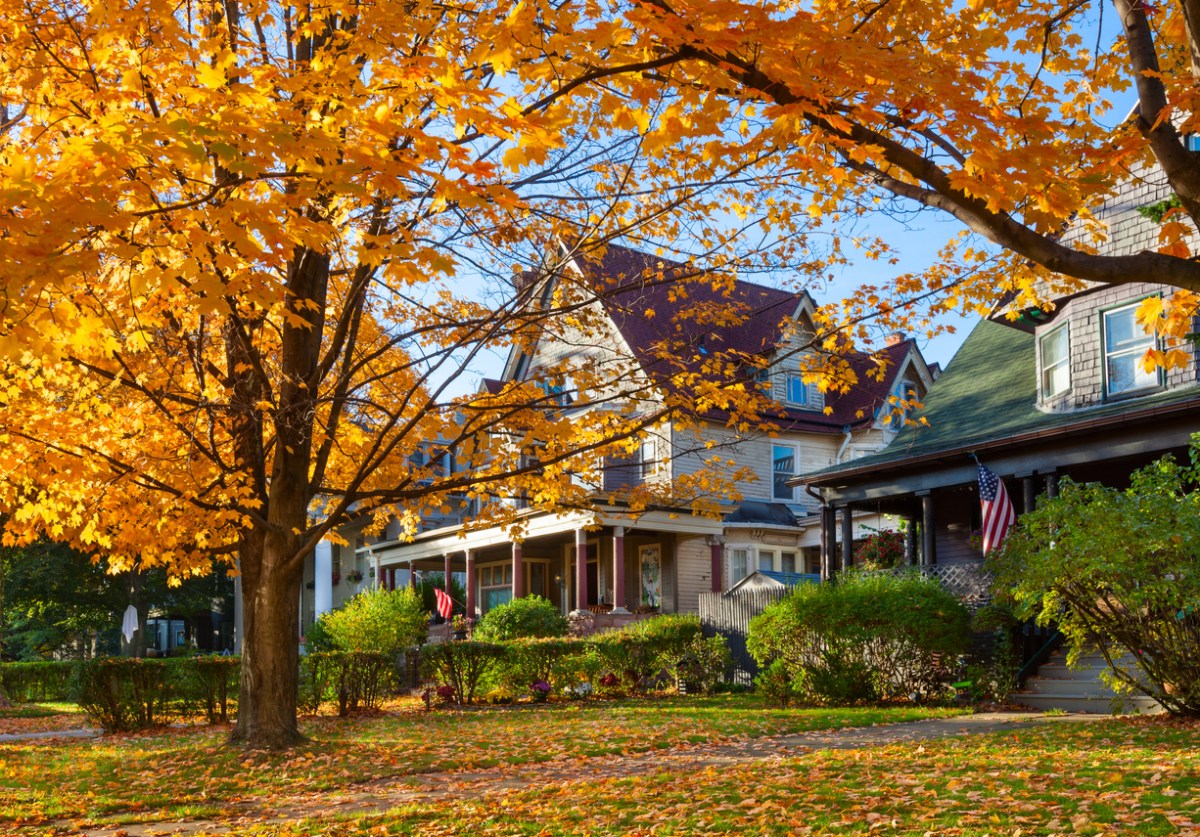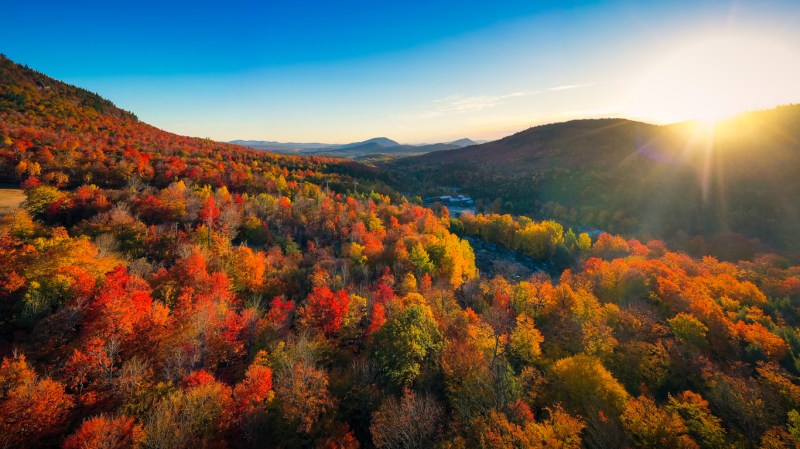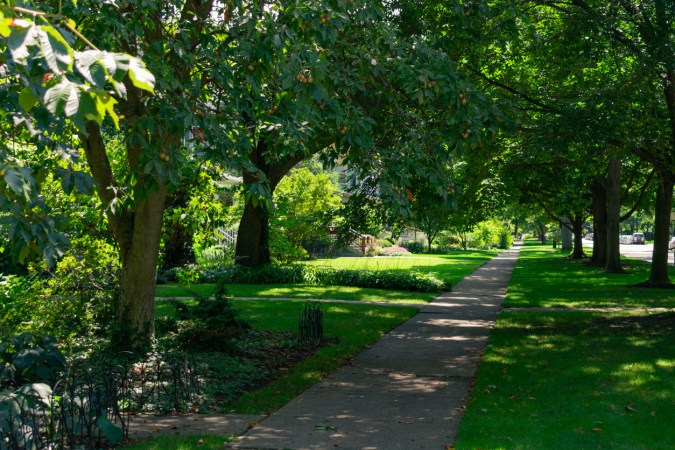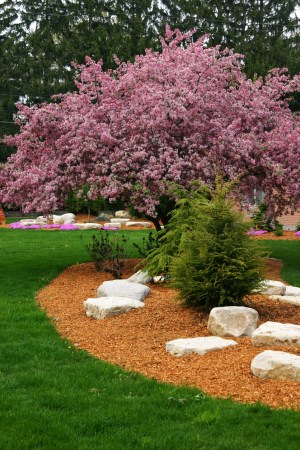We may earn revenue from the products available on this page and participate in affiliate programs. Learn More ›
Q: The leaves are starting to turn earlier than usual in my neck of the woods. One neighbor says it’s because we’ve had an exceptionally dry summer, while another says it’s because we’ve recently had several nights in a row with below-average temperatures. Are either of them correct? Why do leaves change color in the fall?
A: For centuries, poets, authors, and songwriters have emoted about the colors of leaves in the fall, equating falling leaves with loss and sorrow. However, some people delight in the blazing hues of turning leaves that herald the change of season.
The brief explanation for why leaves change color is that the shorter days of autumn result in less sunshine, which causes the trees to stop producing chlorophyll. But there are other factors that can affect fall colors each year—let’s explore.
RELATED: 35 College Towns You Have to See in the Fall
Leaves are green in the spring and summer because that’s when trees produce a lot of chlorophyll.
Deciduous trees (those that drop their leaves in fall) rely on plenty of sunshine to produce chlorophyll. Chlorophyll, which is responsible for the green color of their leaves, is located in organelles called chloroplasts, which exist in the cytoplasm of plant cells. As the chlorophyll absorbs energy from sunlight, it converts it into energy the plant can use through the chemical reaction process known as photosynthesis. Photosynthesis transforms carbon dioxide and water into sugars that feed the tree and help it grow.
During the spring and summer growing seasons, when the days are long and sunshine is abundant, trees produce a lot of chlorophyll to fuel growth, which keeps their leaves green.
Trees stop producing chlorophyll as the days get shorter, revealing other pigments in the leaves.
As autumn reduces the hours of sunshine available, trees produce less and less chlorophyll. As a result, the green fades, revealing carotenoid pigments, which are the basis for orange colors in flowers, fruits, and vegetables—and leaves. Located in the chloroplasts just like chlorophyll, they help chlorophyll capture sunlight.
While they are always present in leaves, the visibility of these pigments (responsible for yellows, browns, and reds) is usually covered up by the green of the chlorophyll. But as the green fades with the degrading chlorophyll, the pigments are revealed. Oranges from carotenoids are especially noticeable in the autumn changes to many hickories, ashes, aspens, and some maples.
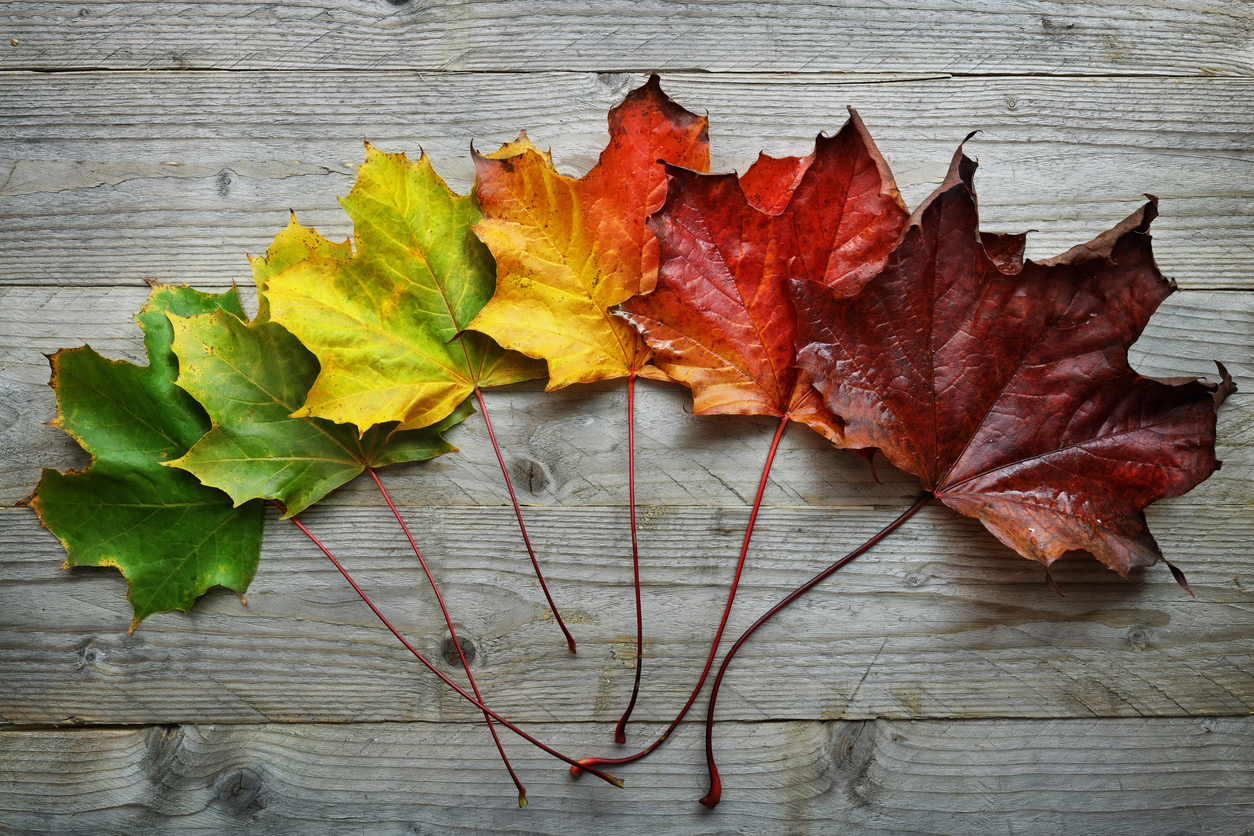
The bright, sunny days and cool, crisp nights of fall bring about anthocyanins in some trees.
Not all trees turn golden yellow or fiery orange. Dogwoods, sassafras, sumac, some oaks, some maples, and other trees produce red leaves in autumn due to a chemical change when sugars get trapped in the leaves and produce new pigments, or anthocyanins. They are formed in the cell sap inside the vacuole.
The warm, sunny days encourage continued sugar production, while the cool nights of fall trigger the gradual closing of the leaf veins, which prevents sugars from leaving. This condition promotes anthocyanin production—new pigments produced by sugars trapped in the leaves, resulting in red hues.
RELATED: Mulching Leaves: Why Mowing Leaves is Better Than Raking Them
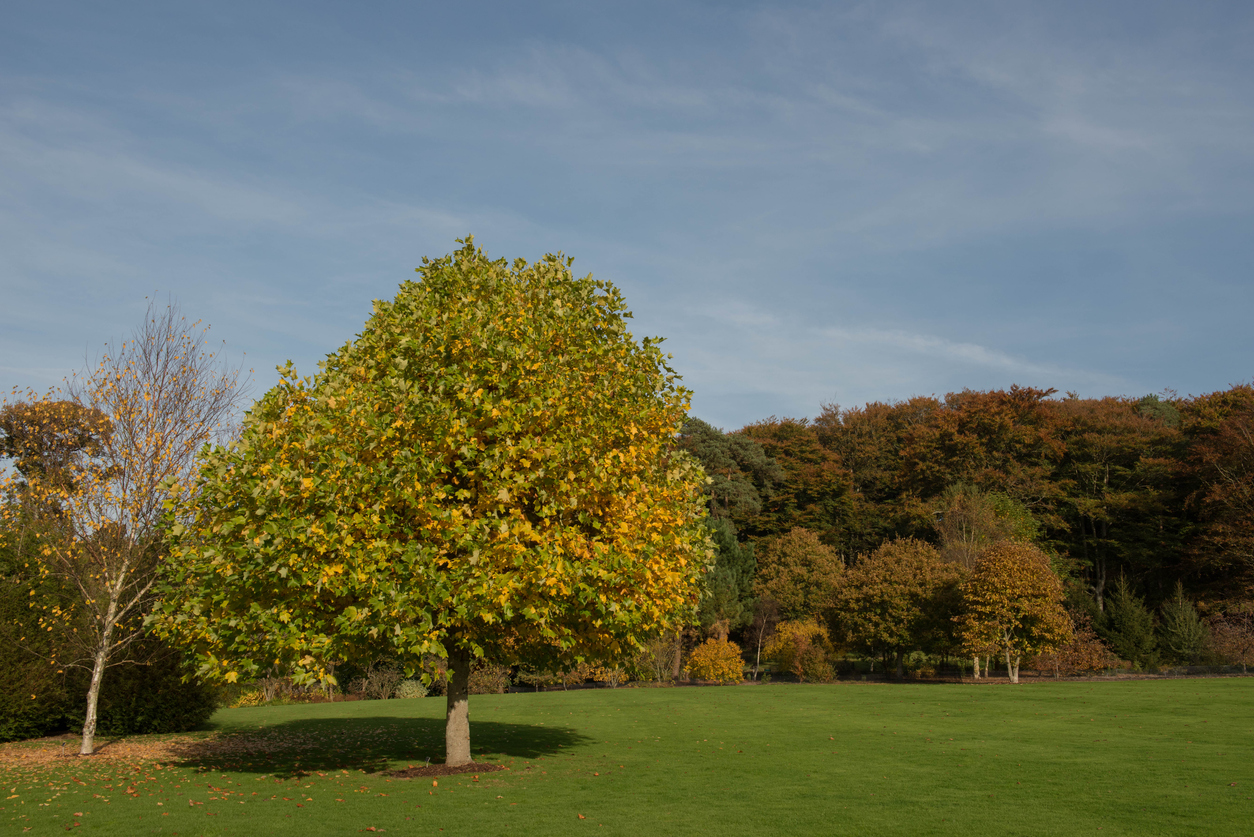
Tree species plays a role in the color and timing of fall foliage.
When do the leaves change color? It largely depends on the type of tree.
Tulip poplar trees are some of the first to change color; they can start turning yellow as early as August. Sugar maples usually follow, with magnificently bright yellow and orange leaves. Red maples change around the same time.
Sugar maples, white ashes, and other native trees tend to change color earlier than trees from other parts of the world, such as Norway maples and weeping willows.
The northern red oak changes color very late in the season. Oak, hickory, and beech are among the last trees to change color in the fall.
Temperature and soil moisture can also affect when leaves change color in the fall.
Although other factors are more inconsistent than the shortening of days (and thus, the calendar exerts the biggest influence on when leaves change color), weather is also a factor. As temperatures drop and more precipitation falls (in the form of rain and sometimes snow), leaf color changes. These conditions can affect not only how early leaves change color, but also how long they keep their color and when they fall from the trees. Because temperatures are cooler at higher altitudes, elevation also impacts the schedule of changing leaf color.
A fall foliage map has to take into account geographical location and annual weather patterns. Don’t expect leaves to change color automatically on the first day of fall. Generally, dry, cool, sunny weather produces better color. Damp, warm, cloudy weather doesn’t achieve the brilliant colors beloved by many leaf peepers.
RELATED: The Do’s and Don’ts of Cleaning Up Leaves
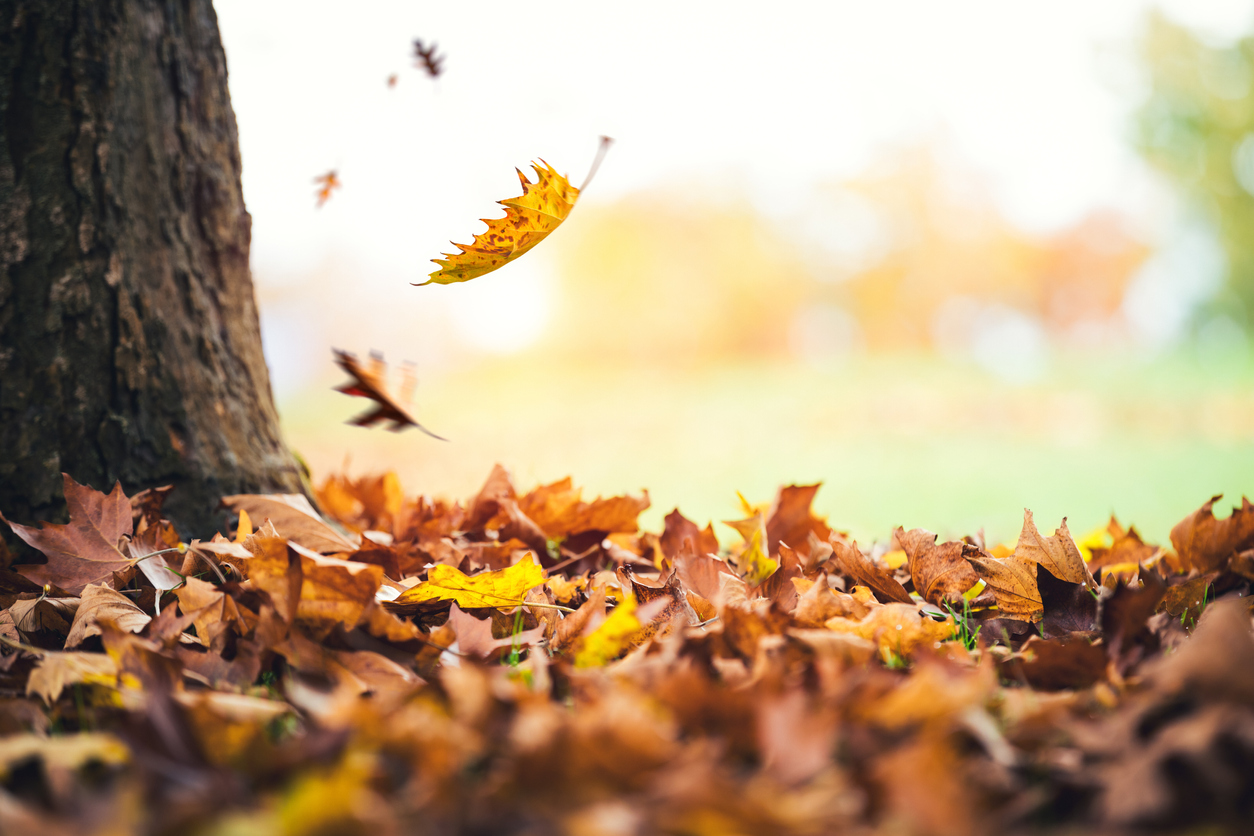
Final Thoughts
Whatever beautiful color they turn, all those leaves eventually end up on the ground. Cooler temperatures and less sunlight signal leaf senescence, the final stage of leaf development. An increase in certain enzymes promotes the breakdown of cells in a coordinated process. Veins carrying fluid to and from each leaf close off.
As the weather changes, trees build a protective seal (abscission layer) between the leaves and their branches. Once the separation layer is complete to the point when the leaves cannot access any more fluid in the branches, they fall to the ground. Leaves change color and fall beginning at the top (crown) of the tree and then down.
Fallen leaves add nutrients to the soil as they decompose. This promotes plant health, which ultimately helps trees carry out the whole leaf cycle again the following year.

